Visible Creative Mending: Eco-Friendly Clothing Repair

In today’s fast-paced fashion industry, textile sustainability has become a pressing issue. The constant production and disposal of clothing have taken a toll on our environment, contributing to pollution and waste. However, there is a movement towards a more sustainable approach to fashion, and visible mending is at the forefront of this shift.
Visible mending is the art of repairing and transforming textiles in a way that makes the mend visible, turning a flaw into a design feature. It embraces the idea of imperfection and celebrates the history of a garment. By visibly mending our clothes, we not only extend their lifespan but also make a statement against the throwaway culture that dominates the fashion industry.
This blog will explore the importance of textile sustainability and how visible mending can contribute to environmental conservation. We will delve into the impact of textile waste and discuss the various techniques and creative ideas for visible mending. Whether you’re a beginner or an experienced crafter, this blog will provide you with the knowledge and inspiration to master visible mending and make a positive impact on the planet.
The Importance of Textile Sustainability
Textile sustainability is a crucial aspect of reducing waste and promoting a circular fashion economy. The production and disposal of clothing have a significant environmental impact, from the shipping of raw materials to the release of pollutants during manufacturing. By embracing visible mending and extending the life of our textiles, we can reduce the need for new purchases and minimize the negative effects of fast fashion. This sustainable approach to fashion not only helps the environment but also allows us to express our creativity and individuality through the art of mending.

How Visible Mending Contributes to Environmental Conservation
Visible mending plays a crucial role in environmental conservation by extending the life of textiles. Instead of throwing away garments with minor flaws, visible mending allows us to repair and transform them, giving them a new lease on life. This reduces the need for new purchases and minimizes the demand for resources like wool and merino.
By embracing visible mending, we can also foster a more conscious and mindful approach to fashion. We become aware of the value of our clothing and the effort that goes into its production. This encourages us to take better care of our garments and appreciate their unique qualities. Through visible mending, we can express our creativity, reduce waste, and contribute to a more sustainable fashion industry.
Getting Started with Visible Mending
Getting started with visible mending is easier than you might think. With a few essential tools and materials, you can begin repairing and customizing your textiles. Whether you’re a seasoned crafter or a complete beginner, visible mending offers endless possibilities for creativity and self-expression. In the next sections, we will explore the tools and materials needed for visible mending, as well as the basic techniques that will help you master the art of mending.
Tools and Materials Needed for Visible Mending
Visible mending requires a few essential tools and materials to get started. Here are some items you’ll need:
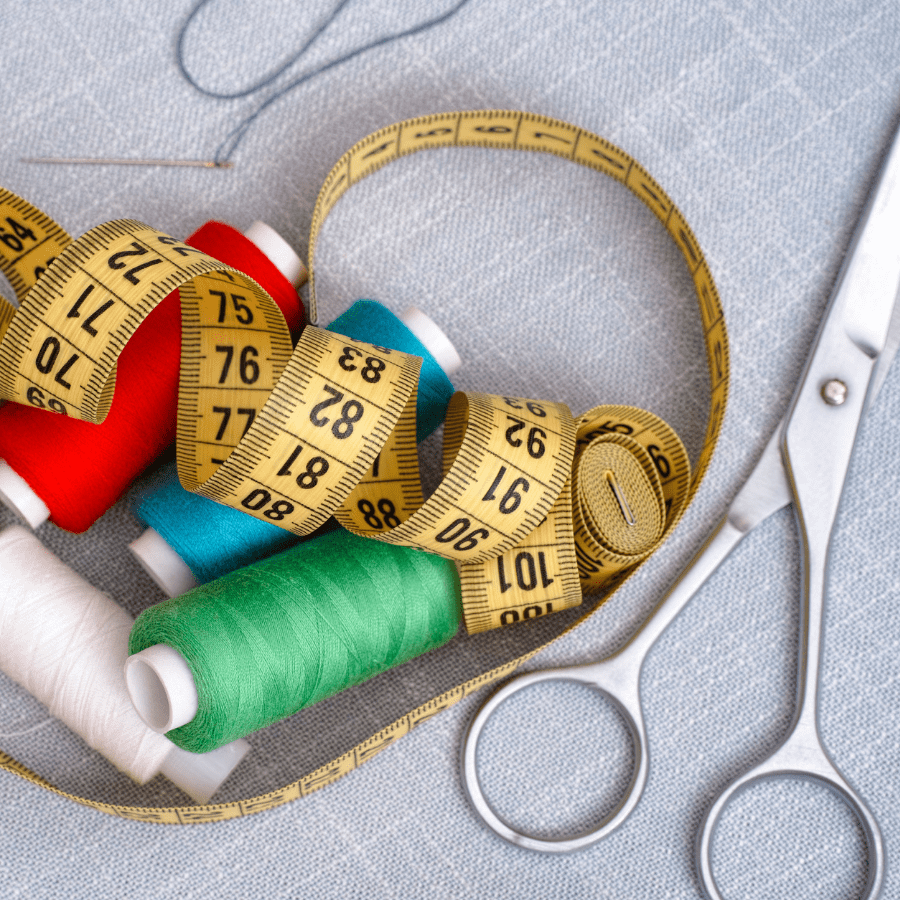
- Embroidery thread: This thread is perfect for adding decorative stitches to your mends.
- All purpose thread: best when trying to hid the mended area.
- Yarn: Choose a yarn that matches the color and weight of your garment for seamless repairs.
- Darning needle: A large needle with a blunt tip that is ideal for weaving thread through fabric.
- hand sewing needle: small and sharp for precision.
- Scissors: Sharp scissors are essential for cutting thread and trimming excess fabric.
- Fabric patches: These can be used to reinforce areas of heavy wear or to add a decorative touch to your mends.
By having these tools and materials on hand, you’ll be ready to transform your garments through visible mending.
Basic Techniques of Visible Mending
Mastering the basic techniques of visible mending will open up a world of possibilities for repairing and customizing your knitwear. Here are a few techniques to get you started:
- Darning: Darning is a simple technique that involves weaving thread or yarn over a hole or worn area to create a new fabric layer. This reinforces the damaged area and prevents further unraveling.
- Embroidery: Embroidery can be used to add decorative stitches or patterns to your mends, turning them into unique design features.
- Patching: Patching involves applying a fabric patch to reinforce or cover a damaged area. This can be done in a contrasting color or pattern to create a visually striking mend.
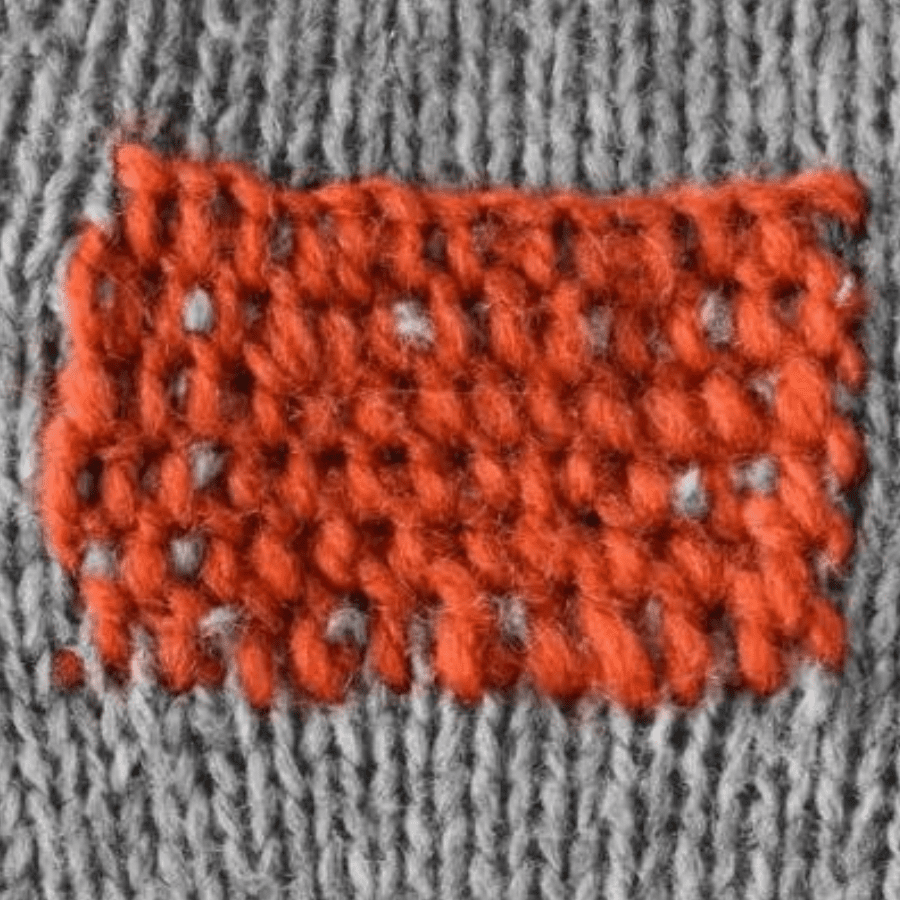
By mastering these basic techniques, you’ll be able to repair and transform your knitwear with confidence and creativity.
Advanced Visible Mending Techniques
Once you’ve mastered the basic techniques of visible mending, you can explore more advanced techniques to elevate your mending skills. These techniques allow you to create intricate designs and incorporate different materials into your mends. In the following sections, we will explore two advanced techniques: artistic darning for knitwear and sashiko, a traditional Japanese mending technique.
Artistic Darning for Knitwear
Artistic darning is a technique that allows you to turn a simple repair into a work of art. By using different colors and stitch patterns, you can create intricate designs that enhance the visual appeal of your knitwear. This technique is particularly effective for mending visible areas like cuffs and edges, where the darning becomes a design feature. With a bit of practice and creativity, you can transform a worn-out sweater into a unique and eye-catching piece.
Sashiko: A Traditional Japanese Mending Technique
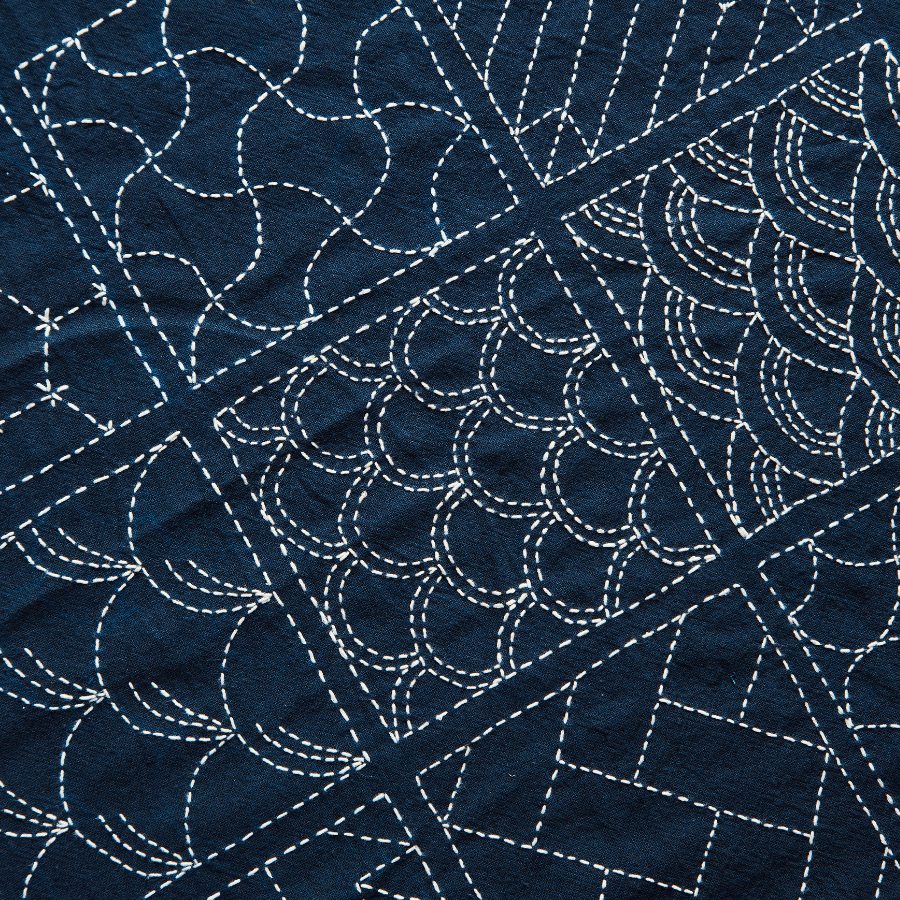
Sashiko is a traditional Japanese mending technique that involves using simple running stitches to repair and reinforce fabric. This technique is often used on denim and other heavy-duty fabrics. Sashiko stitches create a distinctive geometric pattern that adds a touch of elegance to any mend. By incorporating sashiko into your visible mending projects, you can pay homage to centuries of Japanese craftsmanship and create beautiful and durable repairs.
Incorporating Embroidery into Mending
Embroidery is a versatile technique that can be incorporated into your visible mending projects to add intricate designs and personal touches. By using different stitch patterns and colors, you can transform a simple mend into a visually striking feature. Whether you choose to embroider flowers, geometric patterns, or personal motifs, embroidery allows you to customize your mends and infuse them with your own unique style. With a needle, some embroidery thread, and a bit of creativity, you can turn your garments into wearable works of art.
Adding Patches with Flair
Adding patches to your visible mends is a great way to reinforce damaged areas and add a touch of flair to your garments. You can use contrasting fabrics or bold patterns to create visually striking patches that enhance the overall design of your garment. Whether you’re repairing a hole or covering a stain, patches can turn a flaw into a unique feature. By choosing high-quality fabrics like wool or worsted, you ensure that your patches will be durable and long-lasting. Get creative and experiment with different shapes, sizes, and placements to make your mends truly one-of-a-kind.

Transforming a Torn Jean into a Work of Art
Denim jeans are a staple in many wardrobes, but they are also prone to tears and fraying. Instead of discarding a pair of torn jeans, why not transform them into a work of art through visible mending?
With a few simple tools and materials, you can turn a tear into a unique design feature. Whether you choose to mend the tear with a matching thread for a subtle repair or use colorful threads to create intricate embroidery patterns, visible mending allows you to express your personal style and add a touch of individuality to your jeans.
By upcycling your torn jeans through visible mending, you not only give them a new lease of life but also contribute to textile sustainability by reducing waste and promoting creative reuse.
Reviving an Old Sweater with Colorful Darning
Do you have an old sweater hidden away in your closet because of a pesky hole? Visible mending offers a solution to revive that sweater and give it a new lease on life.
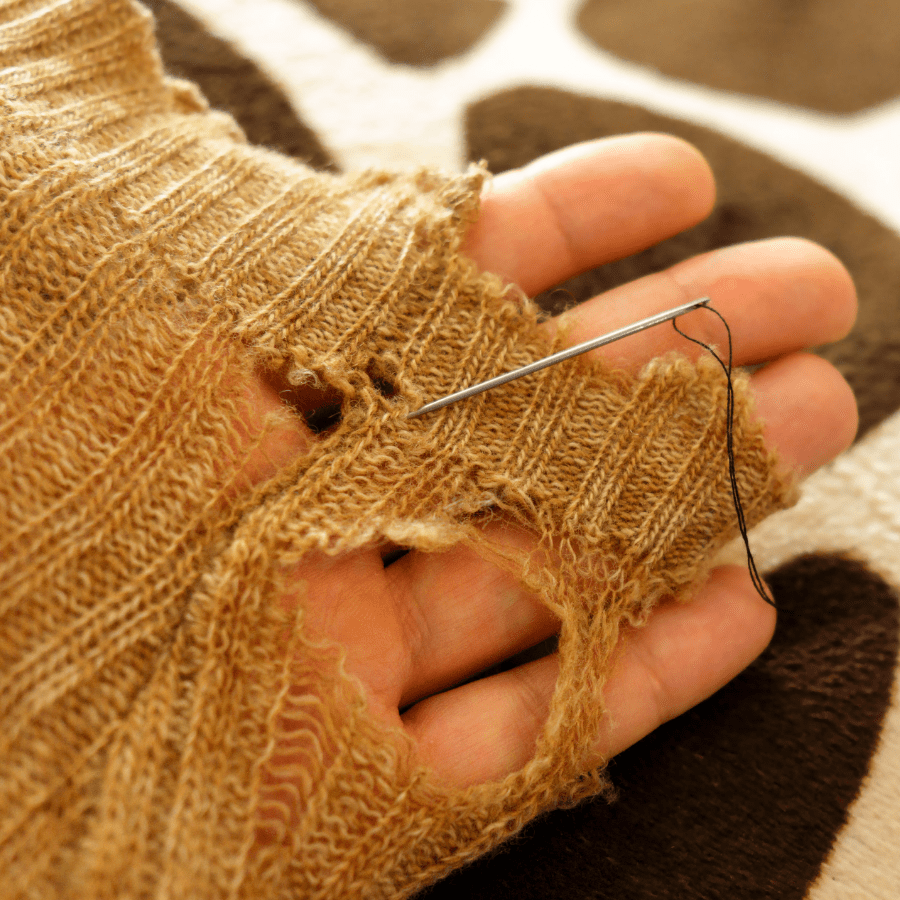
Instead of trying to hide the hole, embrace it as an opportunity for creativity. With a needle and yarn in hand, you can mend the hole in a way that adds a pop of color and visual interest to your sweater. By experimenting with different stitches and yarn combinations, you can turn a simple repair into a stunning embellishment.
Not only does visible mending breathe new life into your old sweaters, but it also promotes textile sustainability by reducing the need for new purchases and extending the lifespan of your garments.
Challenges and Solutions in Visible Mending
Visible mending comes with its own set of challenges, but with the right techniques and solutions, you can overcome them. Difficult fabrics like silk and linen require special attention and techniques to mend effectively.
Color matching for seamless mends can also be challenging, but taking the item that needs mending to the store with you to choose threads/yarns will help keep out the guesswork.
By understanding and implementing these solutions, you can confidently tackle any visible mending project and contribute to sustainable textile practices.
Dealing with Difficult Fabrics
Mending garments made from difficult fabrics like silk and linen can be a daunting task. However, with the right approach and techniques, you can successfully repair and extend the life of these delicate textiles.
Silk, known for its lustrous appearance and delicate nature, requires gentle handling and precise stitching. Linen, on the other hand, needs careful attention to match the fabric’s texture and maintain its integrity.
By moving slowly and using the proper tools, you can mend anything like a pro.
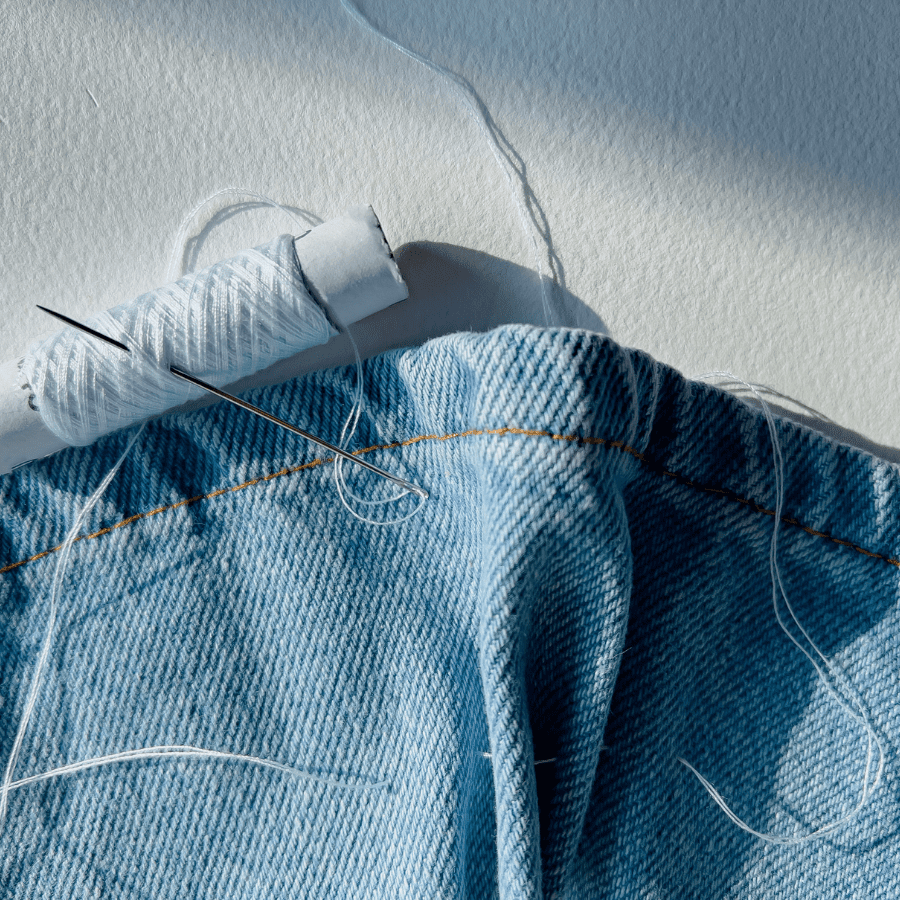
Conclusion
Visible mending is not just about sustainability; it’s a creative way to breathe new life into your textiles. By understanding the impact of textile waste and embracing techniques like artistic darning and Sashiko, you can turn flaws into features. Whether adding embroidery or patches, the possibilities are endless. Through case studies and tips for dealing with challenges, visible mending becomes an art form that celebrates uniqueness and conservation. So, grab your tools, explore the techniques, and embark on a journey of textile sustainability and creativity. Let’s mend with purpose and style!
Frequently Asked Questions
What Are the Best Fabrics for Visible Mending?
Visible mending can be done on a wide range of fabrics, but some are more suitable than others. Cotton, denim, wool, linen, and silk are ideal fabrics for visible mending due to their durability and ability to hold stitches.
Cotton and denim, being sturdy and versatile, are perfect for visible mending projects. Wool offers warmth and texture, making it a great choice for adding dimension to repairs. Linen provides a lightweight and breathable option, while silk offers an elegant and delicate fabric for intricate mending.